In 2019 Michelangelo Pistoletto (Biella, 1933) gave a lectio magistralis at the Aula Magna of the Accademia Clementina in Bologna and dialogued with Silvia Evangelisti in a lecture on the Third Paradise in the Dams Auditorium.
Two years later, on the occasion of Art City 2021 (a historic program that the Municipality of Bologna dedicates to exhibitions and special events) the Biella-based master returns to the Bologna capital with an exhibition with the evocative title, Gregory XIII and Michelangelo Pistoletto: from Renaissance to Rebirth. The fil rouge of the project is well summarized in the word “renewal”: many of the historical works re-proposed here take on re-actualized meanings in order to trigger in the viewer not only a contemplative vision but a real orientative-active map.
The solo exhibition is housed in the sumptuous Renaissance Palazzo Boncompagni on Via del Monte, which was the home of Ugo Boncompagni, who ascended to the papal throne under the name of Gregory XIII, reordered canon law and invented the revolutionary Gregorian calendar still adopted today by the majority of the Western world.
The building, probably the work of the Sienese architect Baldassarre Peruzzi, but completed by Jacopo Barozzi known as il Vignola, with the reception hall from the monumental pietra serena fireplace dating from the mid 16th century surmounted by the Boncompagni coat of arms, the frescoes by Pellegrino Tibaldi and pupils depicting refined grotesques and The Stories of Young David, the flooring made with a splendid Palladian stonework, the loggia leading to Vignola’s spiral staircase to the piano nobile embellished with a rich picture gallery, the sandstone colonnade worked with arabesque motifs and one of the oldest old magnolia trees in the city, reopens to the public, unveiling its precious masterpieces.
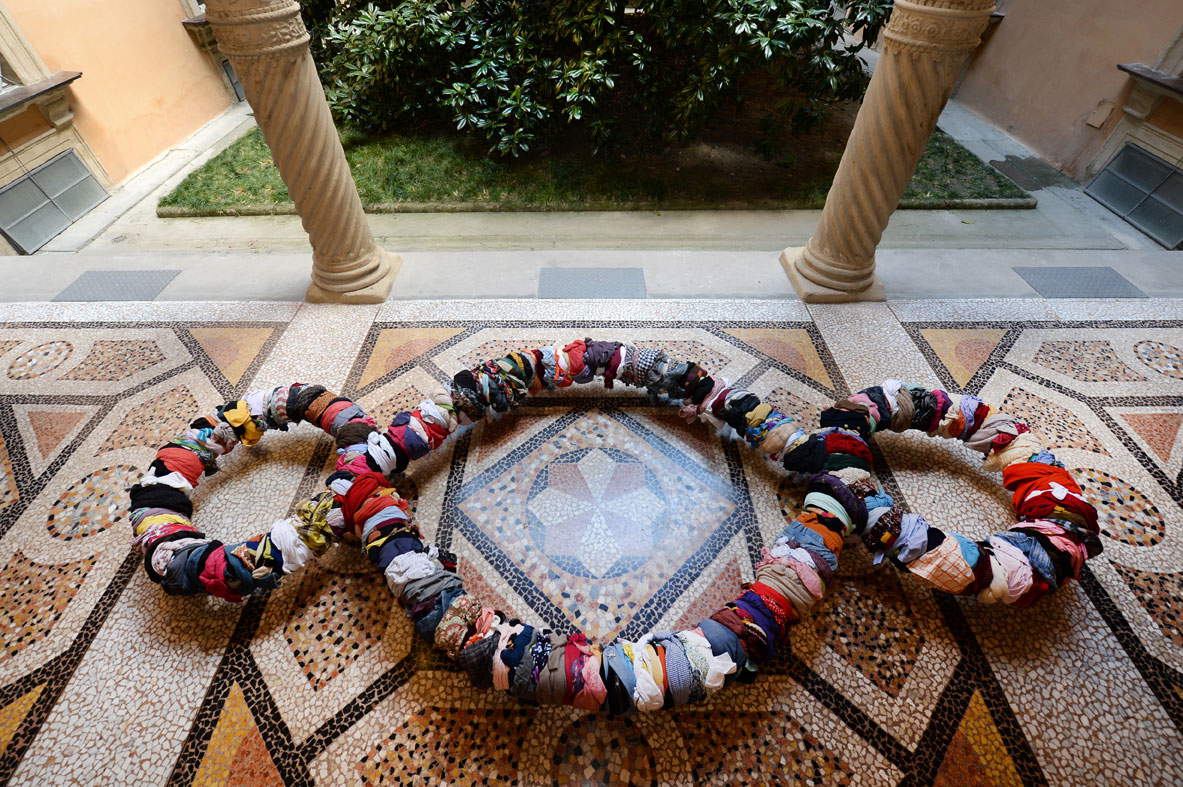 |
| Michelangelo Pistoletto, The Third Paradise (2017; aluminum and disused cloth, 230 x 530 cm; Private collection) |
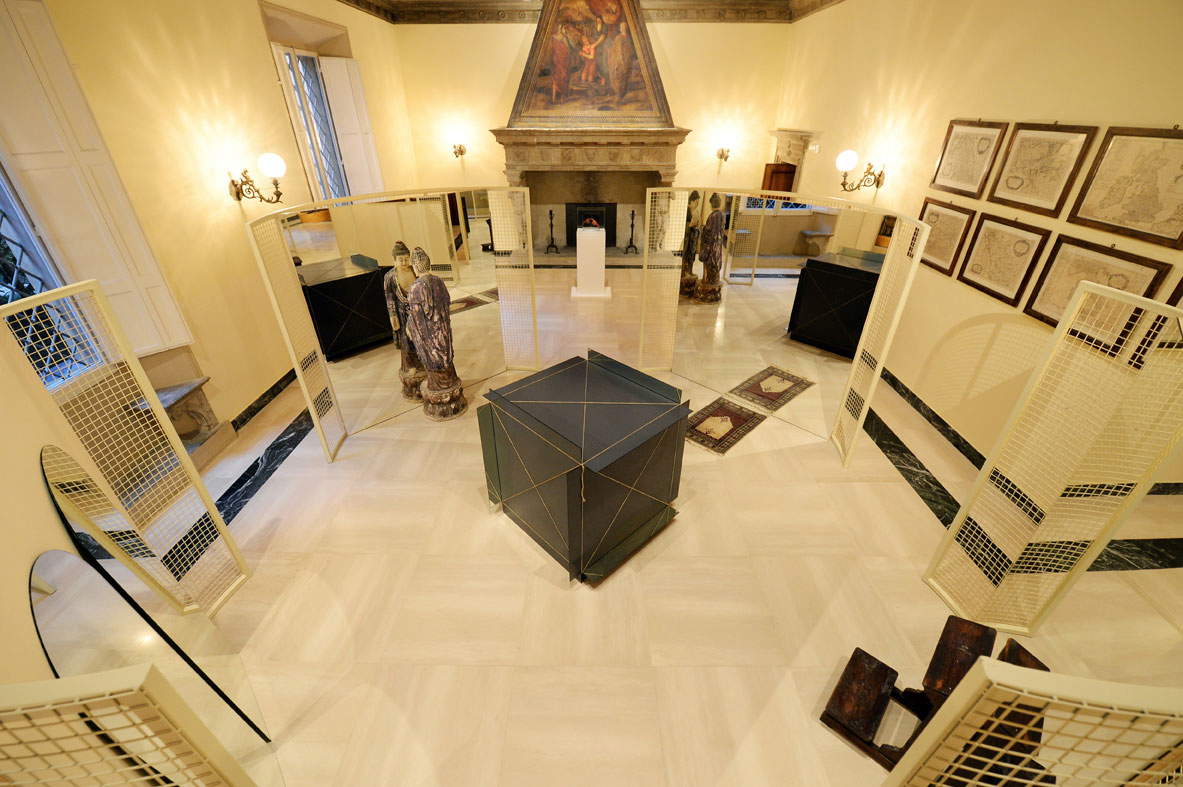 |
| Michelangelo Pistoletto, The Time of Judgment (2009; iron, wood, mirror, carpet, Buddha sculpture, environmental kneeler; Biella, Cittadellarte Fondazione Pistoletto Collection) |
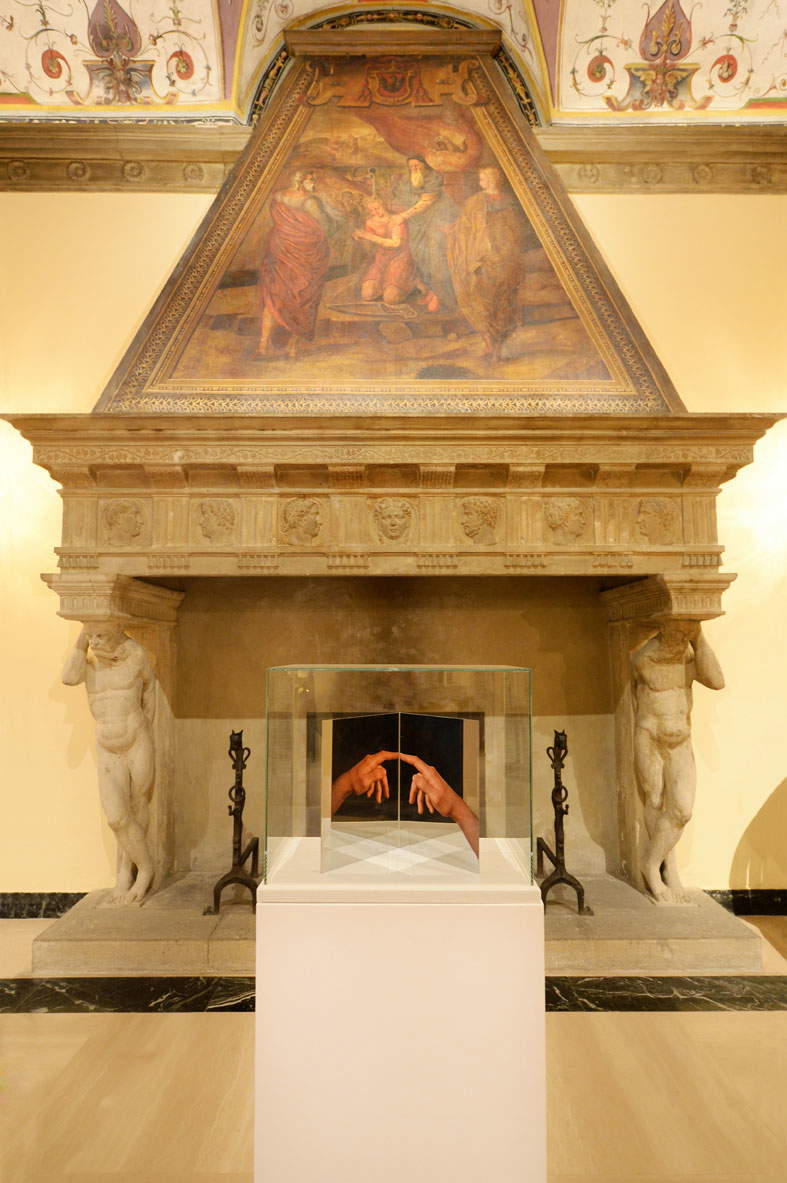 |
| Michelangelo Pistoletto, ConTatto (2017; silkscreen on supermirror stainless steel, wood, marble base, glass case, 22 x 16 x 23 cm; Biella, Cittadellarte Collection - Fondazione Pistoletto) |
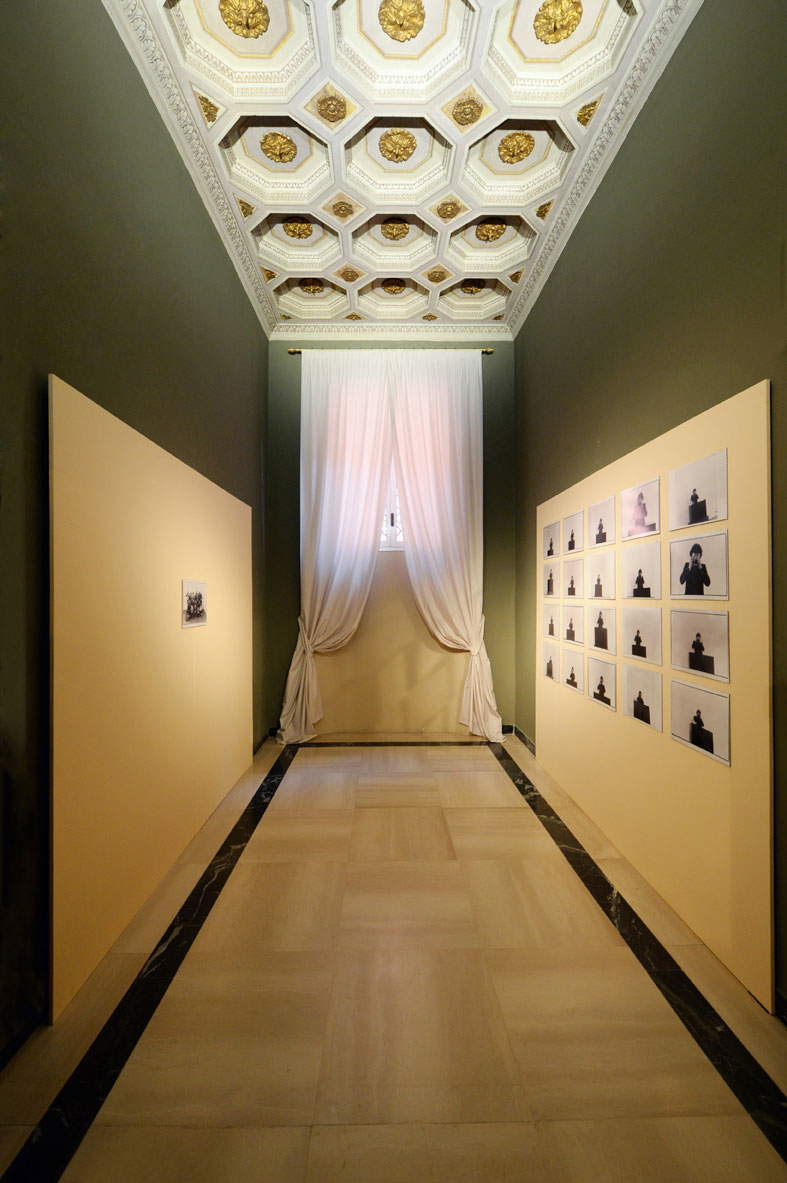 |
| Michelangelo Pistoletto, The Conference (1975; photographic print on d-bond 21 elements, 30 x 40 cm; Biella, Cittadellarte Collection - Fondazione Pistoletto) |
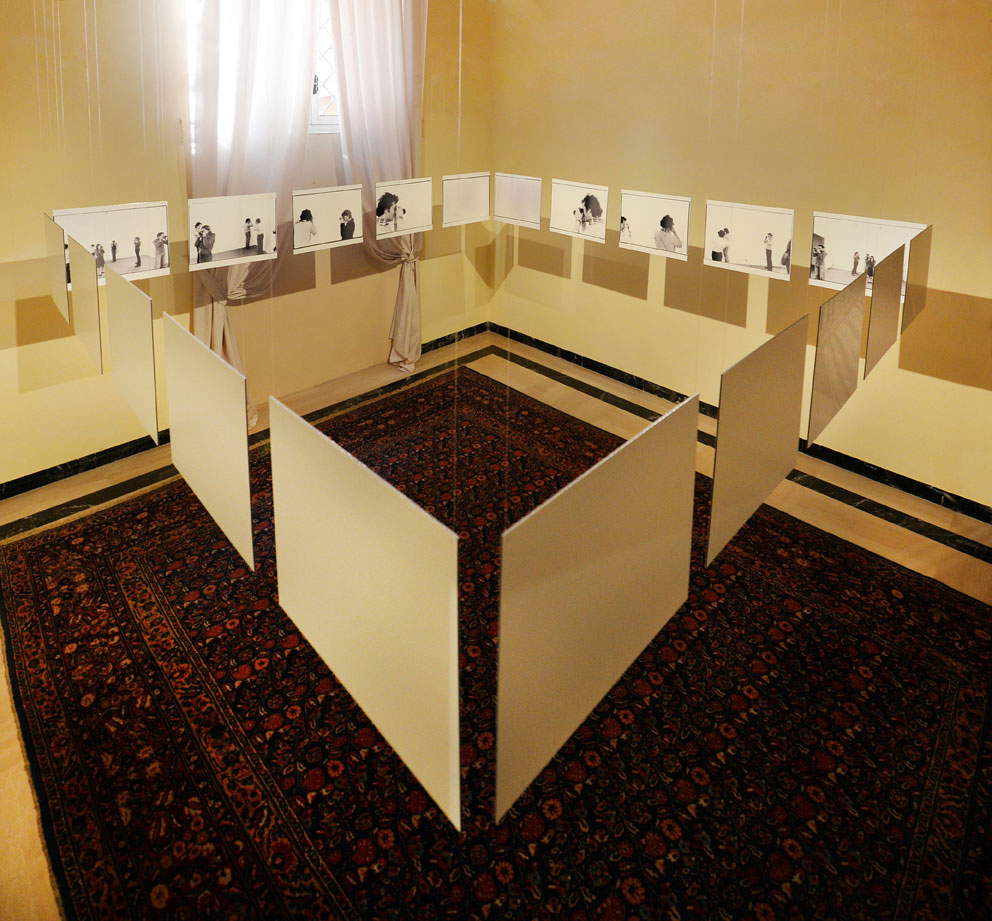 |
| Michelangelo Pistoletto, Rays of People (1975; photographic print on d-bond 20 elements, 40 x 50 cm; Biella, Cittadellarte Collection - Fondazione Pistoletto) |
The exhibition curated by Silvia Evangelisti, ambassador of the Third Paradise, is an opportunity for Michelangelo Pistoletto to measure himself against the architecture of the palace and the complex figure of the Pontiff; both great innovators, both pervaded by four essential components: religion, science, politics and nature.
The union sanctioned in the exhibition between the Renaissance and thus between the past (materialized in the palace) and the tomorrow of the Renaissance (extrinsic in the work of the Biella artist), find a harmonious fusion and activation in the Trinamic formula, that is, in that perspective traced by the Third Paradise for a new stage of humanity, eco-sustainable and democratic, a synthesis and overcoming of nature and artifice. “From the Renaissance,” the artist observes, “we inherit the perspective that guided us until the 20th century, now in the 21st century, we convert the old perspective into the new one, traced by the Third Paradise.”
The works on display, two of which are previously unpublished, trace more than half a century of the master’s work. Installed in the loggia they allocate the Porta segno, art, “gateway into art,” consisting of two triangles to ideally form a human body with arms raised and legs apart, the iconic symbol of the Trinamica obtained by reconfiguring the image of infinity into a trine intersection here covered with those salvaged rags that seem to have migrated from his Venus, synthesizes, through theencounter of two poles that give birth to a third reality, the formula of creation, and again the sequence of theVitruvian Man and the Pozzo cartone specchio being part of those “objects in meno,” considered fundamental for the birth of Arte Povera (located where the ancient cistern once stood).
In the sumptuous Audience Hall, Infinite Metrocube, a polyhedron with opaque outer sides but internally mirrored sides, dialogues with Time of Judgment, an installation work in which Christianity, Buddhism, Judaism and Islam (i.e., the four main monotheistic religions represented by a kneeler, a statue of Buddha, the Tablets of the Law and a carpet), reflected in the mirror, are called together to meditate on themselves; this also relates to the silkscreen print on stainless steel, ConTatto, presented for the first time at the 57th Venice Biennale, echoing Michelangelo’s The Creation of Adam, lowered, however, into a human dimension.
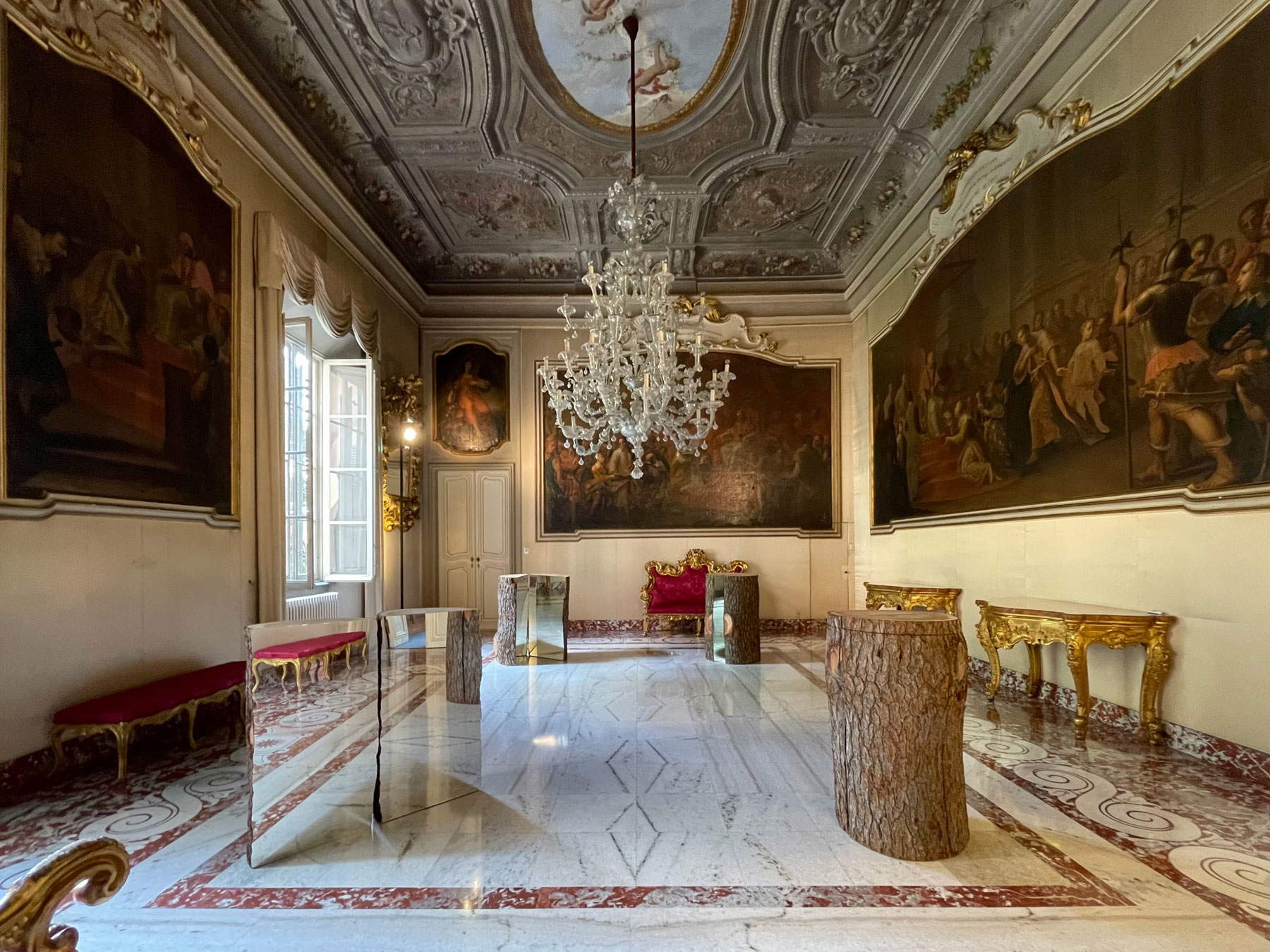 |
| Michelangelo Pistoletto, Trees - Division and Multiplication of the Mirror (1973 - 2020; site-specific installation in the hall on the main floor) |
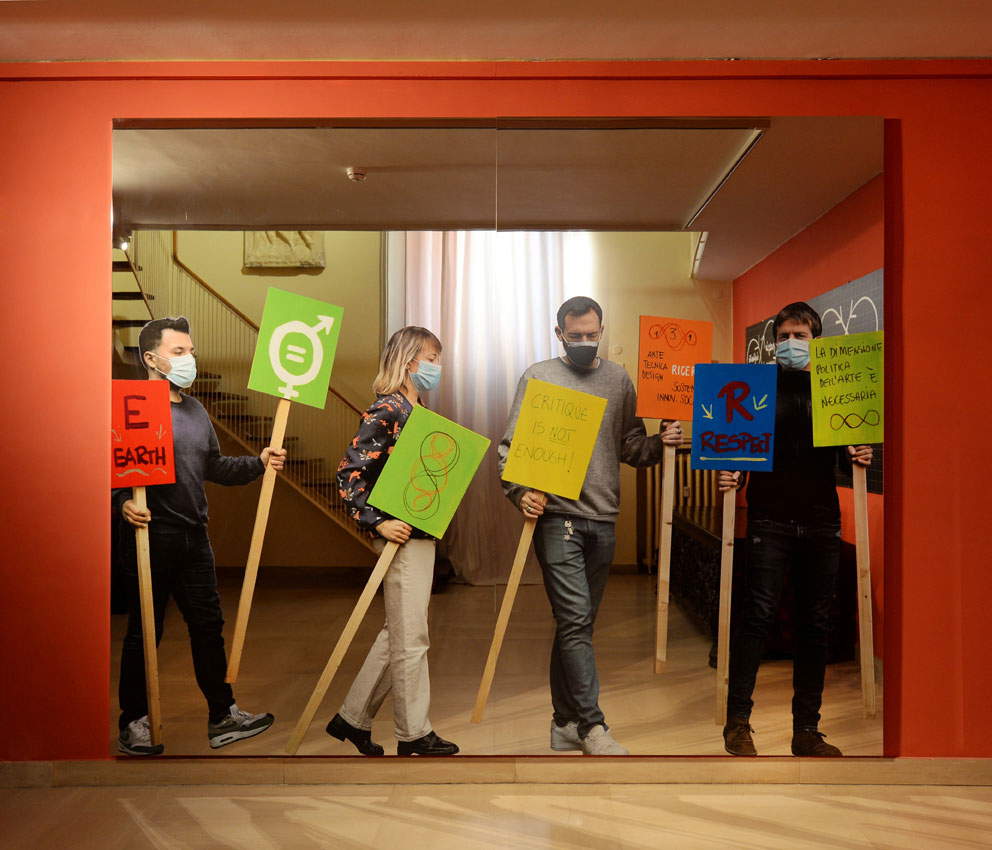 |
| Michelangelo Pistoletto, Action Manifesta (2020; silkscreen on supermirror stainless steel, 250 x 300 cm; Biella, Cittadellarte Collection - Fondazione Pistoletto) |
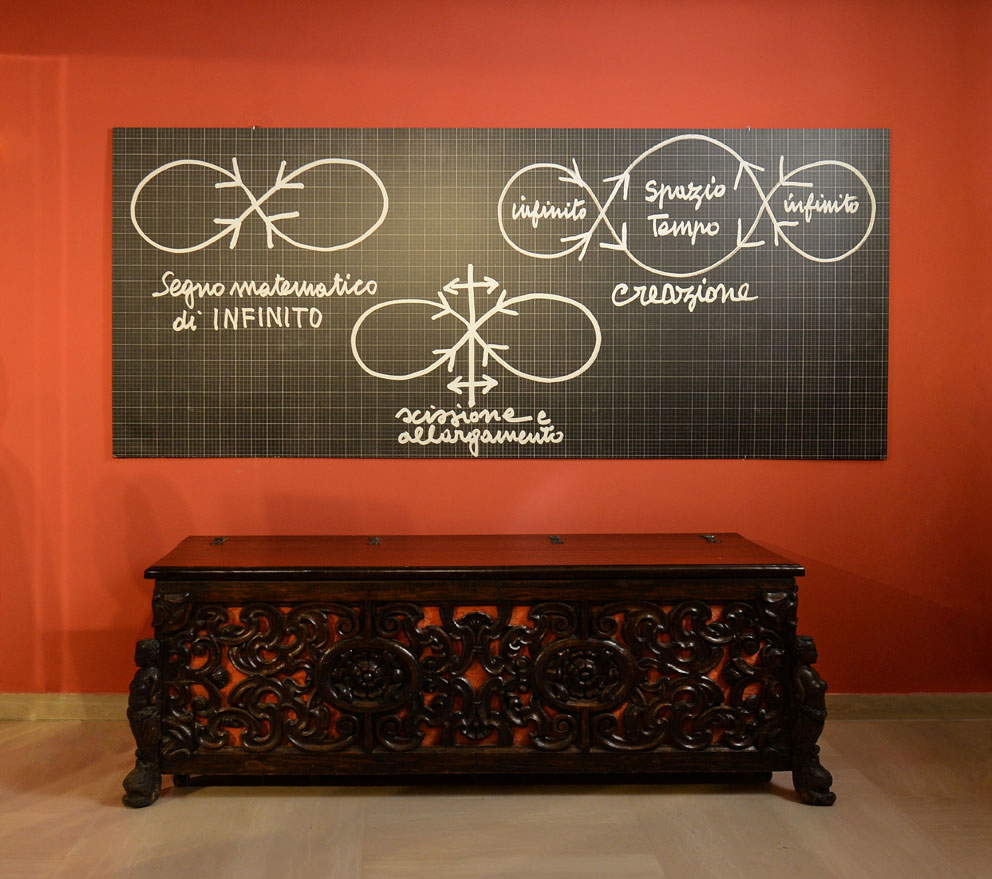 |
| Michelangelo Pistoletto, Third Paradise From Infinity to Creation (2021; print on d-bond, 120 x 300 cm; Biella, Cittadellarte Collection - Fondazione Pistoletto) |
 |
| Michelangelo Pistoletto, Pozzo cartone e specchio (Oggetti in meno 1965-66) (1966; corrugated cardboard and mirror diameter, 160 cm; Biella, Cittadellarte Collection - Fondazione Pistoletto) |
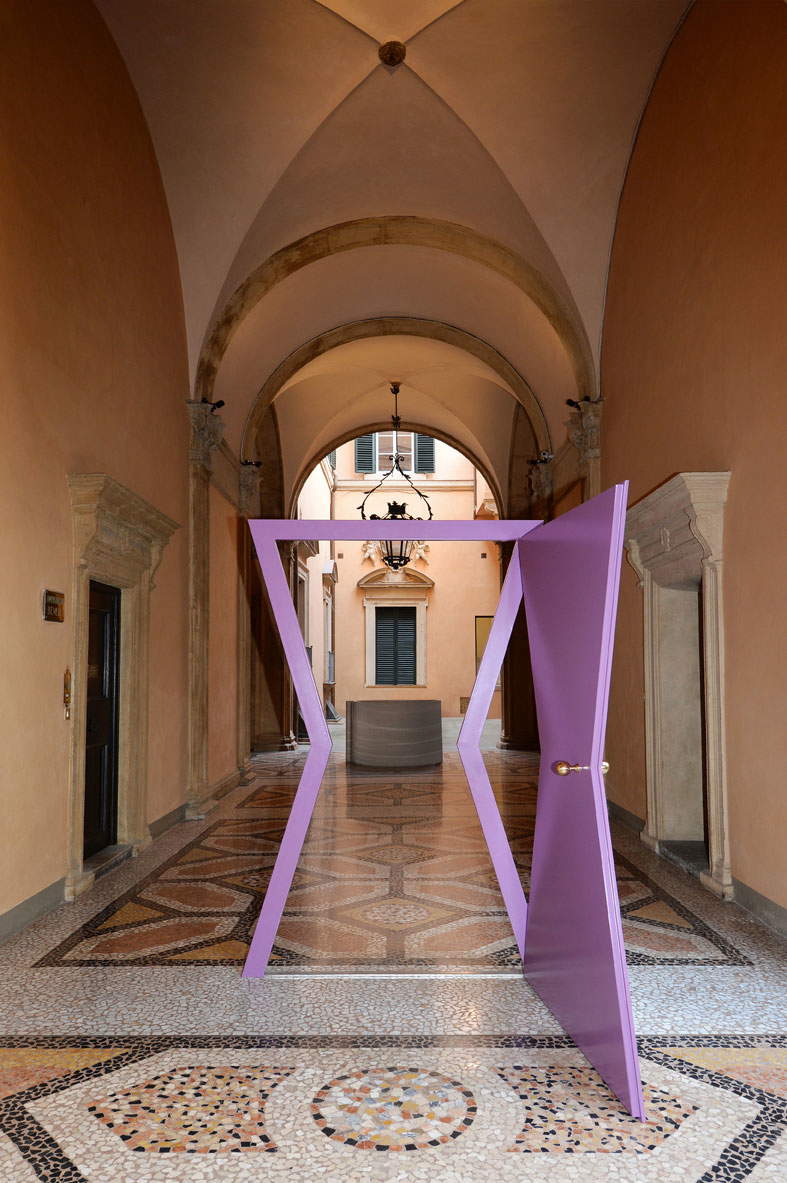 |
| Michelangelo Pistoletto, Porta Segno Arte (1976 1997; iron and enamel, 230 x 140 cm; Biella, Cittadellarte Collection - Fondazione Pistoletto) |
Two photographic works dating back to the 1970s, The Conference and Rays of People, find space in the adjoining rooms: experiments on what is respectively an example of a vision of authoritarian power and circular and simultaneous perspective. This is followed by two previously unseen works, Third Paradise - From Infinity to Creation and Manifest Action, a large mirror bearing the image of young demonstrators who took to the streets during the pandemic to strike out on current issues.
The main floor hosts, in a private-access area of the building, the series Tree Division and Multiplication in conversation with the painting In Praise of Mathematics, where the poverist matrix is mixed with the mirror surface that opens to the fourth dimension, that of time, in a site-specific in progress that spans more than a score of years.
The exhibition, in addition to unraveling the Maestro’s artistic diegesis, once again stands as a manifesto of art-making well amalgamated with life and ethics by highlighting the concept of co-responsibility for a renewed society.
A road already marked out long ago moreover, since in 1994 Pistoletto wrote in Progetto Arte : “Art is the most sensitive and integral expression of thought and it is time for the artist to take upon himself the responsibility of bringing into communication every other human activity, from economics to politics, from science to religion, from education to behavior, in short all instances of the social fabric.”
Warning: the translation into English of the original Italian article was created using automatic tools. We undertake to review all articles, but we do not guarantee the total absence of inaccuracies in the translation due to the program. You can find the original by clicking on the ITA button. If you find any mistake,please contact us.